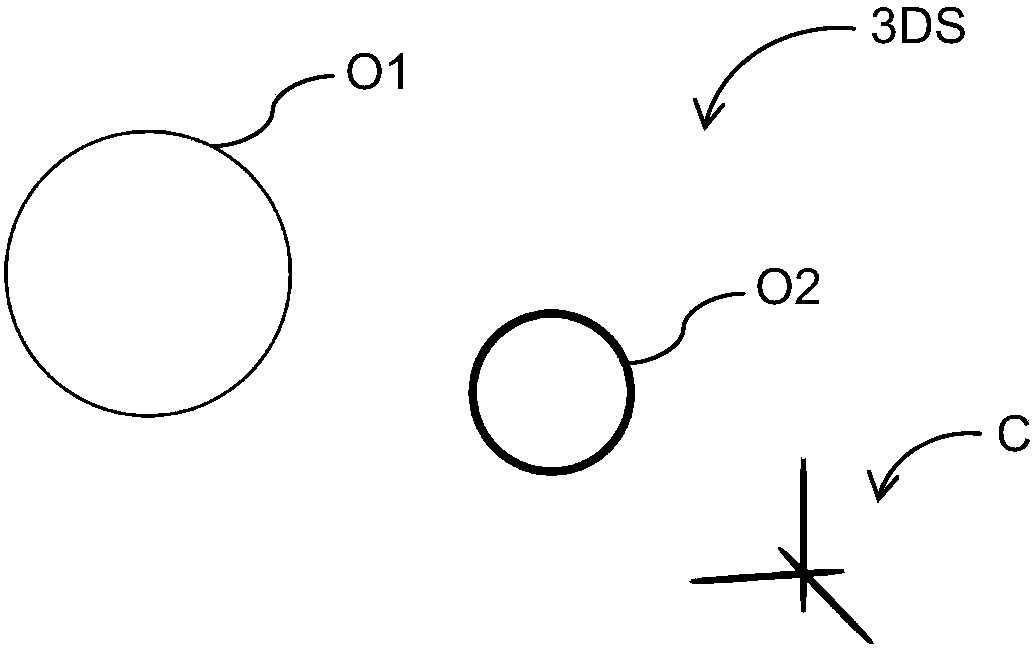Fast manipulation of objects in a three-dimensional scene
A technology of three-dimensional scenes and objects, applied in the input/output process of data processing, instruments, calculations, etc., can solve problems such as expensive hardware, not very flexible, and not very intuitive to use
- Summary
- Abstract
- Description
- Claims
- Application Information
AI Technical Summary
Problems solved by technology
Method used
Image
Examples
Embodiment Construction
[0043] Hereinafter, a "three-dimensional" (or "3D") modeled object will be an object that allows three-dimensional (3D) graphical representation or its digital representation in a computer system. The 3D representation allows parts to be viewed from various angles (viewpoints). For example, when making a 3D representation, the 3D modeled object can be manipulated and rotated about any of its axes, or about any axis in the screen on which the representation is displayed. A three-dimensional scene is composed of a plurality of 3D modeling objects arranged in a three-dimensional space.
[0044] The idea underlying the invention is to use the cursor itself, whose shape is appropriately modified, as an interactor. This eliminates the time-consuming operation of associating an interactor with an object, then clicking on the interactor's element to select a transform. Also, there are no visual hindrances other than the small hindrance caused by the cursor that has to be there anywa...
PUM
 Login to View More
Login to View More Abstract
Description
Claims
Application Information
 Login to View More
Login to View More - R&D
- Intellectual Property
- Life Sciences
- Materials
- Tech Scout
- Unparalleled Data Quality
- Higher Quality Content
- 60% Fewer Hallucinations
Browse by: Latest US Patents, China's latest patents, Technical Efficacy Thesaurus, Application Domain, Technology Topic, Popular Technical Reports.
© 2025 PatSnap. All rights reserved.Legal|Privacy policy|Modern Slavery Act Transparency Statement|Sitemap|About US| Contact US: help@patsnap.com



